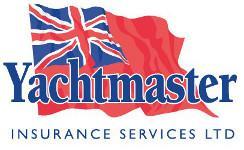Boat surveys and boat insurance are frequently perceived as being closely linked, and with good reason. It seems that each is often regarded by the boat owner as a fairly hefty expense where he only walks away with a piece of paper which is not nearly so attractive as visiting a chandlery, spending the same amount, and coming home with a tangible piece of new gear!
However, as insurers we find surveys very important, especially for craft over about 22 feet in length and over about 20 to 25 years of age as, by this time, a whole host of defects may be present which the surveyor is trained to find but even an experienced owner may miss. We want to know that each vessel is in good condition. If the defects were not identified and eradicated many of these could lead to incidents which could be claimable within the terms of an insurance policy. Too many claims means that premiums will start to rise and then all customers have to pay more. It is much better for insurers to maintain a strict survey requirement routine so that preventative work can be undertaken before there is a chance that a claim will result and the costs are much higher.
We are constantly surprised by enquirers who have spent several thousands of pounds on the purchase of second-hand vessels that they have never seen out of the water, let alone had a survey undertaken, and object to spending the few hundred pounds that it would take to have an expert review their potential purchase before the contract is completed.
A survey before completion of the contract is the more normal approach and allows the prospective purchaser to withdraw from the deal if the survey is poor, or at least he has the option of re-negotiating the price against essential work. The provision of insurance cover should not then be difficult.
There are many defects a surveyor may identify, both inside and outside the vessel, including large repairs below the waterline which are about to fail. Our in-house surveyor discovered one vessel that appeared to be well fitted-out but on closer examination there was evidence that it had probably been sunk and subsequently rebuilt but with bulkheads that did not reach to the sides of the vessel. Hence the vessel lacked strength and on craning the deck and topsides started to fail. This survey saved the potential purchaser from buying a vessel that needed many thousands of pounds of remedial work.
Therefore we would always advise having an out of water survey prior to purchase but the important thing to remember is that if the vessel you are planning to purchase is over 20 to 25 years of age the chances are you will need an up-to-date survey anyway in order to insure the vessel. Your money will therefore be far better spent on a survey prior to purchase rather than afterwards, and for obvious reasons!
D. Long - 11/8/2011
Return to Media Publications & Advice.

